adventure
Metroid: Other M
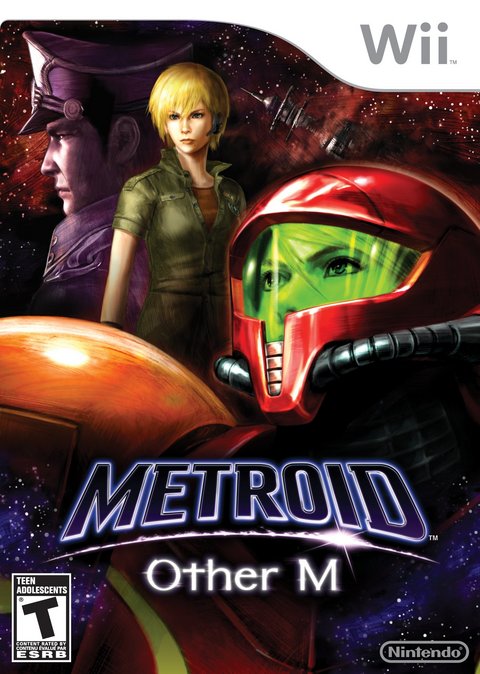 I was first introduced to Samus Aran through her appearance in the Super Smash Bros. fighting game in 1999. As Smash is a melee-centric brawl, I always imagined Samus as an agile and powerful close-combat fighter who happened to have an arm cannon as well. In 2002, I eventually played Super Metroid and Metroid Prime, and discovered that Samus, both in 2D and 3D, fought primarily with her many energy-based weapons. I certainly enjoyed each of the games, but still yearned to see the hulking heroine kick some ass in a more literal sense.
I was first introduced to Samus Aran through her appearance in the Super Smash Bros. fighting game in 1999. As Smash is a melee-centric brawl, I always imagined Samus as an agile and powerful close-combat fighter who happened to have an arm cannon as well. In 2002, I eventually played Super Metroid and Metroid Prime, and discovered that Samus, both in 2D and 3D, fought primarily with her many energy-based weapons. I certainly enjoyed each of the games, but still yearned to see the hulking heroine kick some ass in a more literal sense.
To everyone's surprise, Nintendo ended their E3 2009 presentation with a trailer of the next Metroid game. Created through a collaborative effort between Nintendo's internal studios and Team Ninja of Ninja Gaiden fame, this Metroid: Other M featured Samus Aran's return to third-person adventuring after many years spent behind the visor. Jaws were dropped, however, when the bounty-hunting babe began tossing her foes around like rag dolls, grabbing them in choke-holds, and firing charged beam shots right into their faces. Could this be the Metroid Gaiden I had been waiting for?
The months that led to Other M's release at the end of August tempered my expectations somewhat as new details were revealed, but I was still fairly excited when the game was shipped to my door earlier this week. Did my first romp with Other M leave me disappointed or eager to see more?
Broken Sword: Shadow of the Templars
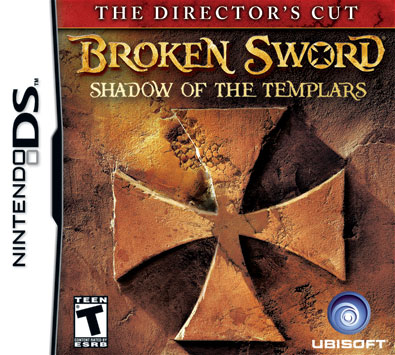 Broken Sword is not a new game. In fact, it was released back in 1996, a year so far gone that I barely remember anything about it. I know I did not experience Broken Sword then or even heard of it; I was just a lad with a PlayStation and a little RPG called Suikoden to occupy my time. Broken Sword only existed in my mainframe later on as a cult thing, something people talked about playing, but were never caught playing. I later played other point-and-click games like Maniac Mansion: Day of the Tentacle and Escape from Monkey Island yet never got to try this “classic.” Then I discovered it in my mother’s DS collection (yes, she plays) a few weeks back and found my chance to try it out for the very first time, some 14 years later. And this is the Director’s Cut which, I guess, means something.
Broken Sword is not a new game. In fact, it was released back in 1996, a year so far gone that I barely remember anything about it. I know I did not experience Broken Sword then or even heard of it; I was just a lad with a PlayStation and a little RPG called Suikoden to occupy my time. Broken Sword only existed in my mainframe later on as a cult thing, something people talked about playing, but were never caught playing. I later played other point-and-click games like Maniac Mansion: Day of the Tentacle and Escape from Monkey Island yet never got to try this “classic.” Then I discovered it in my mother’s DS collection (yes, she plays) a few weeks back and found my chance to try it out for the very first time, some 14 years later. And this is the Director’s Cut which, I guess, means something.
As it’s a story-heavy Nintendo DS game, this is only a half-hour review. I hope it hits all the points and really clicks! Um, I apologize for that…I know it was a stretch.
Castlevania: Dawn of Sorrow
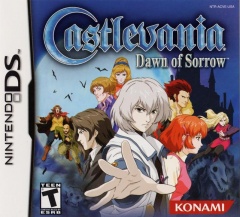 Few gaming series have changed as much as Castlevania. What started off as an action platformer evolved into an exploration focused action RPG with the release of Symphony of the Night, a genre which has been dubbed “Metroidvania.” This style for the series wouldn’t be seen again for several years until it hit the most unlikely of platforms: the Game Boy Advance. Handheld gaming rekindled interest in the series, and since Circle of the Moon in 2001, six handheld Castlevania titles have been released. Dawn of Sorrow is the first one for the DS, and is a direct sequel to the final GBA Castlevania game. Since these games are rather short and focus heavily on post game content and speed runs, I’ve decided to do a half hour review. This has nothing to do with the fact that Dragon Quest IX comes out this week and I’d rather play that than write. Nothing at all!
Few gaming series have changed as much as Castlevania. What started off as an action platformer evolved into an exploration focused action RPG with the release of Symphony of the Night, a genre which has been dubbed “Metroidvania.” This style for the series wouldn’t be seen again for several years until it hit the most unlikely of platforms: the Game Boy Advance. Handheld gaming rekindled interest in the series, and since Circle of the Moon in 2001, six handheld Castlevania titles have been released. Dawn of Sorrow is the first one for the DS, and is a direct sequel to the final GBA Castlevania game. Since these games are rather short and focus heavily on post game content and speed runs, I’ve decided to do a half hour review. This has nothing to do with the fact that Dragon Quest IX comes out this week and I’d rather play that than write. Nothing at all!
The Legend of Zelda: Twilight Princess
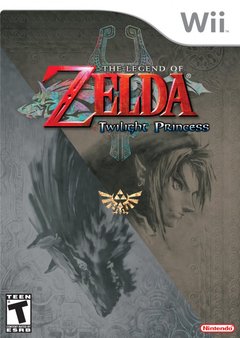 It's hard for me to go an entire year without playing some Legend of Zelda game, heck, just the first half of this year included Spirit Tracks and The Minish Cap, so why not feature the first hour of another? The Legend of Zelda: Twilight Princess was released in 2006 on the Nintendo Wii and GameCube. It was originally going to be for just the GameCube, but Nintendo thought it would make for a great launch title on the Wii (which it did, got me to buy the system), so then the GameCube release was delayed a month to let sales of the Wii version have free reign.
It's hard for me to go an entire year without playing some Legend of Zelda game, heck, just the first half of this year included Spirit Tracks and The Minish Cap, so why not feature the first hour of another? The Legend of Zelda: Twilight Princess was released in 2006 on the Nintendo Wii and GameCube. It was originally going to be for just the GameCube, but Nintendo thought it would make for a great launch title on the Wii (which it did, got me to buy the system), so then the GameCube release was delayed a month to let sales of the Wii version have free reign.
Twilight Princess went on to win game of the year awards and was generally praised around the industry for its gameplay and presentation. For the sake of full disclosure, I beat Twilight Princess within a few weeks of its release on the Wii and have mixed feelings about the game. It's been almost four years though since I've played it so here is its second chance with me in the form of the first hour review of The Legend of Zelda: Twilight Princess for the Wii.
Dragon Ball: Origins
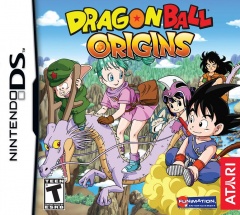 When most people think of Dragon Ball, they think of energy blasts, non-stop fights against aliens, and dozens of episodes where the only thing happening is veins bulging. But once upon a time, Dragon Ball was a simple kung fu adventure show starring a kid with a monkey tail that was loosely-kinda-sorta-maybe based off of the classic Chinese tale “Journey to the West.” Dragon Ball: Origins takes us back to this simpler time before Goku was a demigod and every other thing wanted to blow up Earth, and delivers a solid adventure for old and new fans.
When most people think of Dragon Ball, they think of energy blasts, non-stop fights against aliens, and dozens of episodes where the only thing happening is veins bulging. But once upon a time, Dragon Ball was a simple kung fu adventure show starring a kid with a monkey tail that was loosely-kinda-sorta-maybe based off of the classic Chinese tale “Journey to the West.” Dragon Ball: Origins takes us back to this simpler time before Goku was a demigod and every other thing wanted to blow up Earth, and delivers a solid adventure for old and new fans.
LEGO Harry Potter: Years 1-4
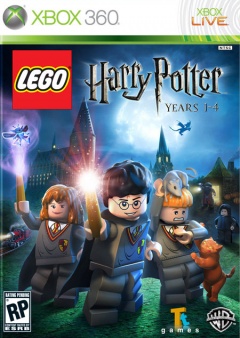 I’ve played every LEGO videogame made so far. Of all my videogames on the Xbox 360, only the LEGO games have the esteemed honor of having all their Achievements unlocked. I played them to completion as fast as possible, almost as if in a fever. If they made LEGO Schindler’s List, I’d probably play it. Same goes for LEGO Requiem for a Dream. The point I’m making here is that I love these games, and I’m twenty-six, and I’m not afraid to admit that they are just my cup of OCD tea.
I’ve played every LEGO videogame made so far. Of all my videogames on the Xbox 360, only the LEGO games have the esteemed honor of having all their Achievements unlocked. I played them to completion as fast as possible, almost as if in a fever. If they made LEGO Schindler’s List, I’d probably play it. Same goes for LEGO Requiem for a Dream. The point I’m making here is that I love these games, and I’m twenty-six, and I’m not afraid to admit that they are just my cup of OCD tea.
Conversely, I’m also a huge Harry Potter fan. I’m one of those rare folks that actually read the first three books before the first movie came out and became a worldwide sensation. I had the sixth book spoiled for me on a Lord of the Rings TCG forum. I read the last book in less than 24 hours, locked up in my parents’ basement, only coming up once to eat dinner and not talk to anyone. The movies are hit or miss in my mind, but the world and characters and magic of it all is something I can’t get enough of. Neither can my fiancée. We’re getting married this October and heading to Universal Studios on our honeymoon to check out the Wizarding World of Harry Potter.
I’ve been excited about this merging of two great entities since I first read about it. I always expected the next universe to be LEGO-ized to be Spider-Man’s. My expectations are high, and after having played the demo that was recently released I have no fears that the first hour for LEGO Harry Potter: Years 1-4 will be anything but spectacular.
The Legend of Zelda: The Minish Cap
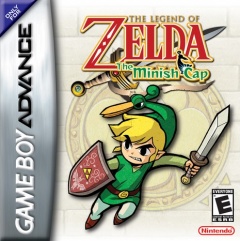 Over the course of The Legend of Zelda series, I haven't missed a lot
of games. I've played everything from Zelda II to Majora's Mask to
Oracle of Ages, but there was one that I had skipped: The Legend of
Zelda: The Minish Cap. Why that one? How could I have missed it? I
can only determine that my interest was low due to it being developed
outside Nintendo again (Minish Cap, the two Oracle games, and Four
Swords were created by Flagship, a former Capcom studio) and that it
missed the 2004 holiday window by a few weeks. Plus, for whatever
reason it seemed like a kids game. I always saw the feature of Link
turning into a pixie as... lame.
Over the course of The Legend of Zelda series, I haven't missed a lot
of games. I've played everything from Zelda II to Majora's Mask to
Oracle of Ages, but there was one that I had skipped: The Legend of
Zelda: The Minish Cap. Why that one? How could I have missed it? I
can only determine that my interest was low due to it being developed
outside Nintendo again (Minish Cap, the two Oracle games, and Four
Swords were created by Flagship, a former Capcom studio) and that it
missed the 2004 holiday window by a few weeks. Plus, for whatever
reason it seemed like a kids game. I always saw the feature of Link
turning into a pixie as... lame.
How wrong I was.
Five years later and I finally determine that it's high time to play The Minish Cap, so I add it to my Amazon wishlist and receive it for my birthday in May. I plowed through this game like my family's lives depended on it (meaning I ignored them in the process, whoops, won't happen again), but wanted to let the game sink in for a while before I organized all my thoughts and finished the review.
It's probably worth comparing my review of this game to the two previous portable Zeldas: Phantom Hourglass and Spirit Tracks. I always felt like those games were missing something, but I couldn't lay my finger on it until I played The Minish Cap. Here's my full review of the one I almost let get away: The Legend of Zelda: The Minish Cap.
The QTE cure: Singin' in the Heavy Rain
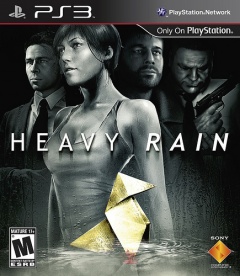 Quick Time Events. Ever since God of War and Resident Evil 4 exploded
onto the scene with button-prompt sequences of gore and horror, the
industry has shown its sheep-like nature and incorporated these Gotcha!
moments into games without thinking about how they make an
interactive experience better. Many gamers have adjusted to the fact
that every cutscene now has an awful series of play buttons throughout, but I
personally would like to cram all the QTEs in the world into a space
shuttle full of cobras and launch them directly into the sun if it meant
I'd never have to see another one again.
Quick Time Events. Ever since God of War and Resident Evil 4 exploded
onto the scene with button-prompt sequences of gore and horror, the
industry has shown its sheep-like nature and incorporated these Gotcha!
moments into games without thinking about how they make an
interactive experience better. Many gamers have adjusted to the fact
that every cutscene now has an awful series of play buttons throughout, but I
personally would like to cram all the QTEs in the world into a space
shuttle full of cobras and launch them directly into the sun if it meant
I'd never have to see another one again.
That said, it's not impossible to come across decent use of QTEs.
Indeed, before Resident Evil 4 set the standard at the advent of 2005,
the mechanic was most prominently-used by the Dreamcast's crown jewel,
Shenmue. In fact, it was Yu Suzuki, that game's director, who coined the
term "Quick Time Event." Suzuki put the gimmick to good use throughout
Shenmue, allowing protagonist Ryo Hazuki to do everything from tossing
drunkards around in bar brawls to saving little girls from incoming
soccer balls. One of the reasons the game is so beloved today is that it
allowed the player to engage in such a wide variety of scenarios, many
of which were supported with smartly-designed QTEs.
Good QTEs didn't end with Shenmue, however, even though sometimes it seems that's the case. Like God of War, other Playstation heavyweights have managed to use QTEs to enhance a game experience. I think it's only fair that we look at a few of those, as well as some alternatives to these timed button-prompts for cinematic flair in games.
The QTE plague: What hath God of War wrought?
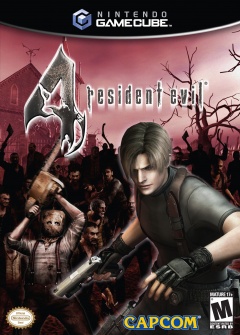 Quick Time Events. So many games have used them to some extent in the
last five years that just about every gamer has an opinion on them.
Mine is that they are the worst gameplay gimmick to take the industry by
storm in a long time, and I wouldn't mind seeing them all packed into a
burlap sack filled with leeches and thrown into the depths of a
volcano. They're tacky, they're unintuitive, and their attempts to
engage players in cinematic animations backfire and break the sense of
immersion one has with a game. And unfortunately for me, they're just
about everywhere these days.
Quick Time Events. So many games have used them to some extent in the
last five years that just about every gamer has an opinion on them.
Mine is that they are the worst gameplay gimmick to take the industry by
storm in a long time, and I wouldn't mind seeing them all packed into a
burlap sack filled with leeches and thrown into the depths of a
volcano. They're tacky, they're unintuitive, and their attempts to
engage players in cinematic animations backfire and break the sense of
immersion one has with a game. And unfortunately for me, they're just
about everywhere these days.
Two behemoths let loose in early 2005 can be thanked -- or blamed -- for the salvo of games that have featured QTEs in the last five years. The first, with a January 11 release date, was Resident Evil 4. The game was extremely well-received: it won many Game of the Year awards, offered a fresh take on the aging Resident Evil formula, and gave Gamecube owners a third-party exclusive worth bragging about. The other member of the gruesome twosome that brought us into the era of QTEs is known as God of War. Released just two months after Resident Evil 4, the game received just as many accolades and turned heads back to the PS2 as quickly as they'd been lost to the Gamecube's horror hit. Is it any wonder that the industry went in the direction it did when two such monumental successes as these both prominently featured a relatively unused gameplay gimmick?
Today we'll take a look at how the smart use of QTEs helped put these two games on the map, and watch a few examples of QTEs gone wrong. And trust me, there was a huge pool of resources for the latter.
3D Dot Game Heroes
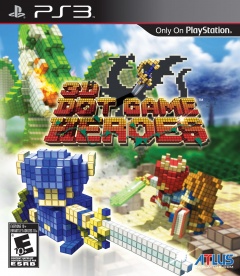 Retro revivals are all the rage nowadays. In the era of the
low-budget downloadable games market, everybody's digging into their
past to give a
classic a fresh coat of paint or create a sequel with
old-school flare. The former provides a proven template onto which
shiny new graphics can be applied, while the latter guarantees interest
from lifelong fans who long to experience that same magic like it were
new again.
Retro revivals are all the rage nowadays. In the era of the
low-budget downloadable games market, everybody's digging into their
past to give a
classic a fresh coat of paint or create a sequel with
old-school flare. The former provides a proven template onto which
shiny new graphics can be applied, while the latter guarantees interest
from lifelong fans who long to experience that same magic like it were
new again.
3D Dot Game Heroes is a retro-styled installment in Nintendo's famed Legend of Zelda series, albeit one that was developed by a different company and published for a different company's hardware, and it would be slapped silly with copyright infringement lawsuits if the word "Zelda" appeared anywhere in it. From Software, known for its Armored Core series and the recent hit Demon's Souls, doesn't just take a page from Nintendo's book: the book gets Xeroxed from cover to cover. Almost everything in 3D Dot Game Heroes feels like it was stolen from The Legend of Zelda: A Link to the Past, from the plot to the controls to the stage designs to the items and everything in between.
We tend to view knockoffs as inferior, bitter, envious versions of the genuine article. Does 3D Dot Game Heroes lack the essence of its explosively-popular inspiration, or does it manage to work a little magic of its own?
